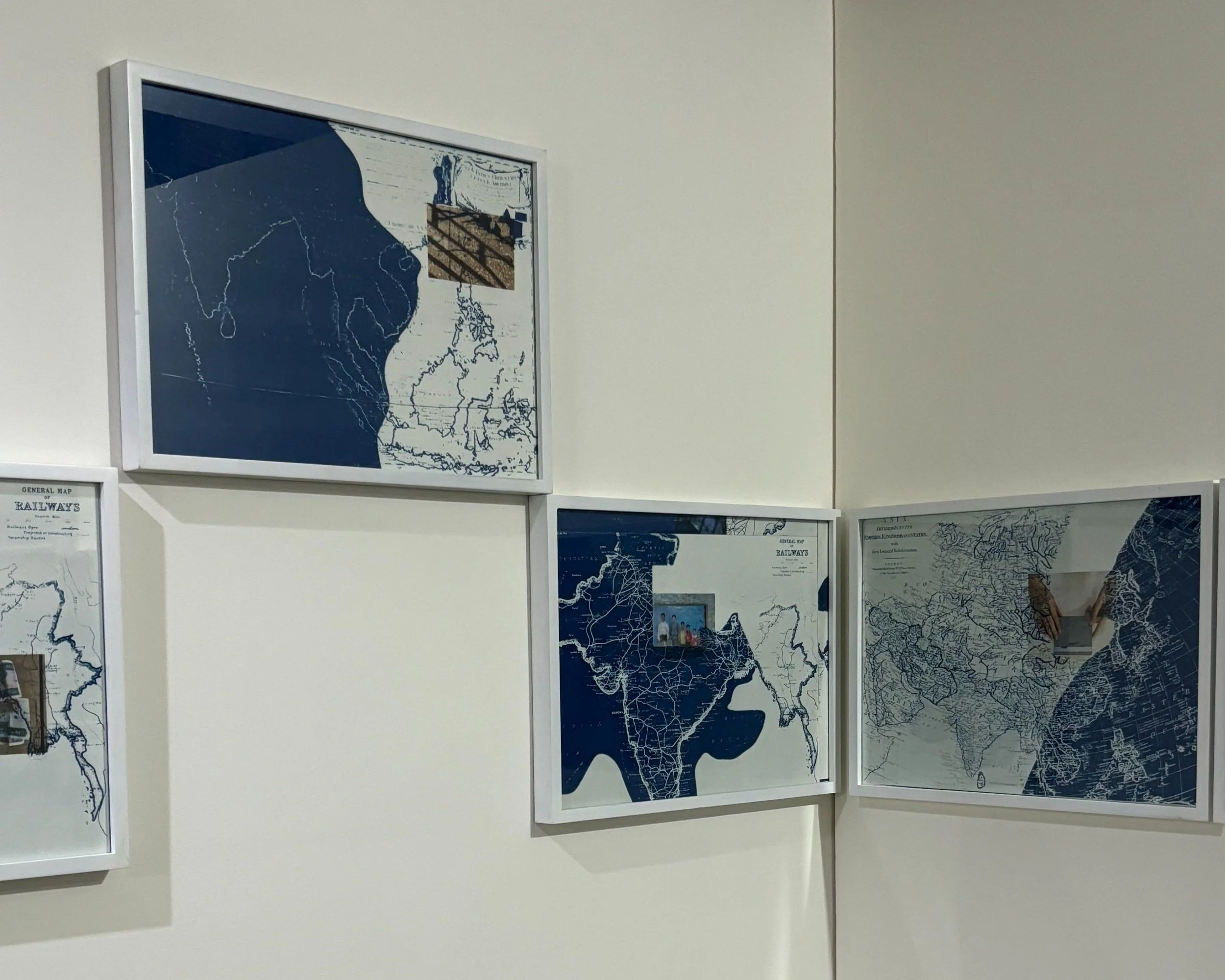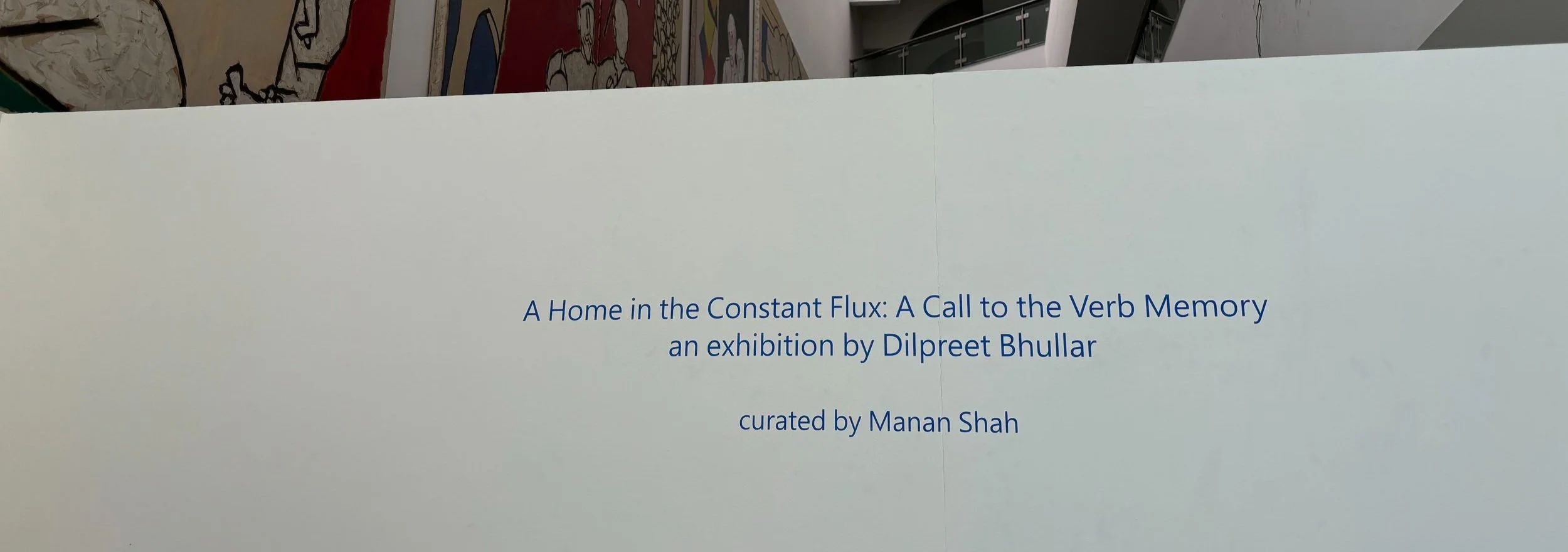Helly Malviya I 9th October 2024
"A Home in the Constant Flux": Dilpreet Bhullar's Exploration of Displacement
Exhibitions are often powerful platforms for artists to connect with their audience and share their unique perspectives. Not only do these exhibitions showcase artistic abilities, but they also serve as venues for artists to communicate important ideas, educate audiences, and advocate for pressing issues. Dilpreet Bhullar's poignant exhibition, "A Home in the Constant Flux: A Call to the Verb Memory," is a prime example of this. By focusing on the personal belongings of forcibly displaced people, she invites us to see beyond the headlines and connect with the humanity behind the statistics.
Her journey into the world of displacement began with a personal connection to history. As a student of partition studies, she was deeply moved by the stories of exile and loss that emerged from that turbulent period. Her initial exploration of the topic was sparked by Margaret Bourke-White's iconic photo essay "The Great Migration," which offered a powerful visual representation of the human cost of forced migration. This essay ignited Bhullar's interest in understanding how displacement narratives are told and perceived and how visual storytelling can be used to evoke empathy and understanding.
Bhullar's interest in the visual representation of forcibly displaced people led her to a groundbreaking discovery. By analyzing photo essays from different decades, she noticed a striking pattern: the visual language used to depict forcibly displaced had remained remarkably consistent.
I realised since the visual language on the representation of forcibly displaced have not changed and instead of waiting for someone to come up with something new – why don't I work on these lines.
Recognizing the limitations of archival work, she decided to shift her focus towards direct engagement with forcibly displaced persons. By visiting shelter homes and interacting with them, she hoped to gain a deeper understanding of their experiences and contribute to a more authentic and impactful representation of displacement. She believed that by connecting with these displaced communities on a personal level, she could uncover stories that had been overlooked or marginalized in the media.
Imagine a collection of objects, each a silent witness to a life uprooted. In "A Home in the Constant Flux: A Call to the Verb Memory," Dilpreet Bhullar invites us on a journey through the personal narratives of forcibly displaced people, told not through their words alone but through the tangible artifacts that have accompanied them on their perilous journeys. Bhullar believes that these material possessions hold the power to evoke profound memories and emotions, far beyond their functional value. By focusing on these objects, she challenges us to see beyond the stereotypes and headlines often associated with forcibly displaced people and recognizing them behind the labels.
Each item featured in the exhibition tells a unique story, a fragment of a life disrupted by displacement. These objects offer a glimpse into the challenges, hopes, and resilience of those forced to flee their homes, ranging from worn clothing that has weathered countless miles to cherished family heirlooms that carry the weight of generations. Through these tangible artifacts, we can connect with the human experiences that lie beneath the statistics and headlines.
Among the many poignant items on display, two stand out in particular. First, there is a tie, lovingly preserved by an Afghan mother, serving as a moving reminder of her lost son. The second image is a certificate earned by a displaced person from Myanmar. The individual had studied at a religious place that was later demolished, rendering the certificate seemingly worthless. Yet she insisted on capturing it in a photograph, recognizing it as a tangible symbol of his past achievements and the cultural heritage lost in the conflict. These images serve as a reminder of the resilience and determination of those who have been forced to rebuild their lives in the face of adversity.
Witnessing discriminatory actions against certain communities during the 2019 protests left a lasting mark on her, bringing back haunting memories of the Partition. As a student of literature who had immersed herself in the study of partition history, she saw these sectarian boundaries unfolding before her eyes, echoing the divisions that had ravaged the subcontinent decades earlier.
As a minority myself, even if my family had not experienced the repercussions of the partition, I had known close encounters with loss. This project is a means to document the current – day forcibly displaced – a way to show my solidarity with the communities who are pushed to the margins of alienation.
Bhullar's exhibitions at the Simurgh Center, Bangalore International Center, and Santiniketan resonated deeply with the communities they were intended to reach. The visual narratives seemed to mirror their own hidden experiences, sparking a sense of recognition and empathy. While social norms often kept their emotions in check, their eyes and body language spoke volumes. The general public at each venue was captivated by the stories, challenges, and aspirations showcased in the exhibition. They were eager to learn more about the project's goals and future plans. Young students, in particular, were inspired by the creative process and
the potential for the exhibition to reach a wider audience through future travels. The exhibitions served as a powerful platform for fostering understanding, empathy, and solidarity with forcibly displaced communities.
The photo-series is a way to disseminate the stories to as many people as I can. As we speak, a large section of people is displaced during the war in Gaza: a war rooted in hyper-nationalism and religious supremacy.
Dilpreet expressed a desire to expand the scope of her project to include objects from forcibly displaced people not only in India but also in regions like Venezuela, Colombia, Europe, and North Africa. By connecting these disparate stories, she hopes to create a thread of solidarity that transcends geographical boundaries and fosters a deeper understanding of the shared experiences of displacement.





